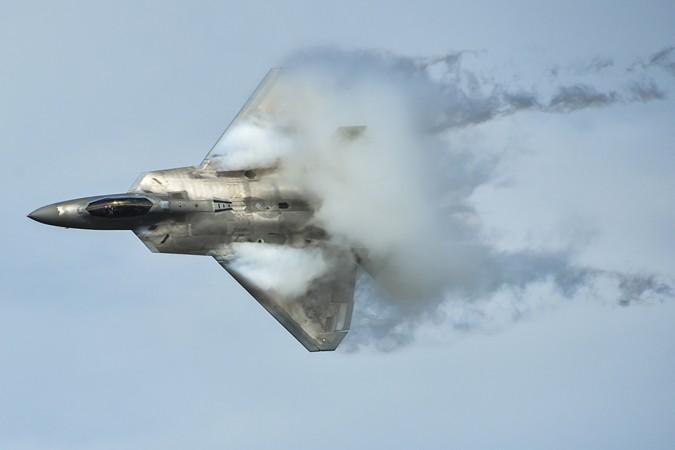
Russia's next-gen fighter jet – Su-57 – was spotted landing at Russia's Khmeimim airbase on the shores of the Mediterranean. Videos showing the Su-57 have been making the rounds on social media, which experts warn could be used to spy on US's F-22 stealth fighter.
The unverified footage had its fair share of speculation at first, but more sightings and confirmations coming out of Syria from earlier this week pretty much confirm the deployment's authenticity. The Pentagon, however, did not confirm that Russia indeed landed two of its most advanced fighter jets into Russia's main airbase in Syria on Wednesday.
#BREAKING - First footage of #Russia top stealth Su-57 fighter jet over #Syrian #Khmemeim air base. Total of 2 Su-57 stealth fighters were deployed with 4x Su-35, 4x Su-25 and 1 early warning plane A-50U. pic.twitter.com/IV4Yw6b9Gl
— SURA (@AlSuraEnglish) February 22, 2018
What is so special about Russia's indigenously designed Su-57 that has put everyone on the edge? While most details about Russia's next-gen fighter jet are classified, here are the least known facts about Su-57 that you must know.
Seven facts about Su-57
* The Su-57 (T-50) is Russia's first stealth jet with a single-seat, twin-engine air superiority/deep air support, which locks horns with the advanced F-22 Raptor and F-35 Joint Strike Fighter. The jet is still under testing and the first batch of 12 fighters will be ready in 2019.
* The Su-57 is designed to be stealthy, supermaneuverable and have supercruise capability. Equipped with Saturn izdeliye 30 engines in post-2020 production models, Su-57 can generate between 24,054 and 35,556 pounds of thrust and fly speeds of up to Mach 1.5 in supercruise. The izdeliye 30 increases thrust, offers better fuel efficiency and lower maintenance costs – adding to the jet's durability and reliability.
* The Su-57 has been under testing for at least last two years and equipped with Saturn AL-41F1S engine – same as Sukhoi Su-35S Flanker-E.
* The Su-57 comes with 3D thrust vector jets as compared to F-22's 2D thrust vector jets. Hence the Su-57 is expected to have better maneuverability.
* The Su-57 is not combat ready yet, but it can be used to spy on targets in the air and on the ground (or even those F-22s US has deployed in Syria). For that, the Su-57 is equipped with NO56 Byelka (squirrel) radar system and L402 electronic countermeasures suite, which can help the pilot track and engage targets using IR-guided missiles.
* The Su-57 has two large internal weapon bays, where it can store a wide range of bombs and missiles, including four 77M beyond-visual-range radar-guided missiles in each bay. When armed, these missiles can target at ranges of up to 100 miles. The Su-57 is also capable of carrying nuclear-capable BrahMos-A supersonic cruise missile, but at the cost of losing its stealth as the missile must be carried under the aircraft's wings.
* With all these capabilities, the Su-57 is expected to cost $50 million and the country's air force project for the jets is expected to cost around $10 billion.








